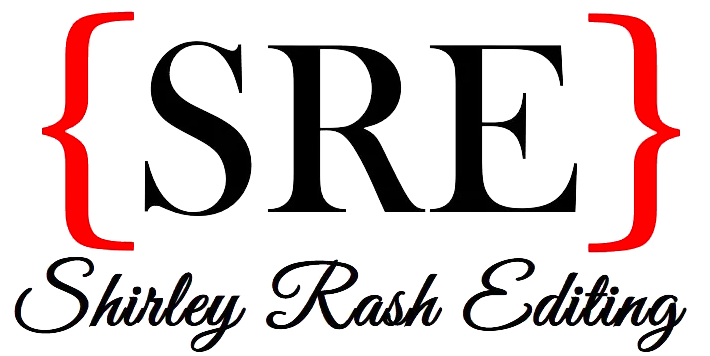Outside of editing/publishing circles, people usually use “proofreading” as a synonym for copyediting. They say they want someone to proof their paper or manuscript or memo, but what they really want is someone to correct their grammar and punctuation. Most of the time, the other person interprets it as copyediting, but this is not really proofreading.
When you ask an editor to proofread something for you, that’s a very specific form of editing that you are requesting.
So, exactly what is proofreading and why is it something I don’t generally do as an editor?
What is proofreading?
The word proofreading comes from the practice of double-checking printer proofs within traditional publishing. Proofs show what the pages will look like once the final product is printed, so this is the last chance for the editor (and author) to make changes.
When I worked as an associate editor for a local publisher a few years ago, the arrival of the printer proofs meant you needed to stop what you were doing to proof them because they were time-sensitive. We needed to get the printer proof corrections back to the printer in a timely fashion to avoid slowing down the printing process. They were oversized pages that looked exactly like the finalized book and resided in the conference room until everyone had a look at them.
How is this different from copyediting?
When an editor is copyediting, they’re usually working with a Microsoft Word document pre-layout. They’re making changes via Track Changes, and the purpose of the process is to find errors related to grammar, punctuation, spelling, etc. It’s not uncommon for there to be thousands of corrections in a book-length manuscript at this stage of editing. When I am copyediting, I usually don’t see the images or graphics that will accompany the text, and I don’t expect to do so. In fact, having images in the manuscript at this stage can cause issues when copyediting. The number of corrections combined with image files in the text can cause Word to glitch and lag.
When an editor is proofreading, they’re either working with the physical printer proofs or a PDF for a digital proof post-layout. Everything that will be in the final product should be there, including images and graphics, in their proper place. The proofreader’s purpose is to check for errors that didn’t caught during copyediting, as well as pay special attention to issues beyond the text that may have been introduced during layout—pagination inconsistencies, widows and orphans (first and last lines of a paragraph that end up separated from the rest of the paragraph on a different page), bad breaks, incorrectly captioned images, etc.
Fixing errors during the proofing process is much more complicated than in the copyediting process. It’s not a matter of just accepting or rejecting Track Changes in a Word file. The printer is going to have to make the corrections, not the editor. And the more changes you have, the more the printer is going to charge you for correcting the proofs because that’s a lot of extra work for them, and it increases the potential for introducing other errors as elements of the layout potentially slide out of place or typos get added. So, if you’re getting hundreds or thousands of corrections (as well as significant changes) back on a proofread, something has gone horribly wrong.
Sometimes, it’s because the proofreader doesn’t understand what they’re supposed to be doing–when I worked as an associate editor, I occasionally dealt with inexperienced freelance proofreaders who wanted to rewrite the book. That’s not happening at this stage, and that’s also a great way to end your budding career as a proofreader. Other times, the proofreader knows exactly what they’re doing, but another part of the process has gone awry. Maybe the copyeditor was lax or the printer received the wrong file. In this situation, an experienced proofreader is likely going to stop work and contact the editor who sent them the file to see what’s wrong.
In any event, the editing itself should already have happened before proofreading, and the proofreader should just be catching minor oversights.
When should proofreading occur?
Proofreading should occur at the very end—after developmental editing, line editing, copyediting, and layout. Your manuscript should not be laid out until after copyediting has happened, and you definitely don’t want a proofreader looking at it until that layout is finalized since part of their job is serving as a safety net to catch anything the copyeditor or layout artist missed.
Do I need a proofreader if I’m not doing traditional publishing?
Yes. Proofreading is an important quality control measure in the publishing process. That’s true whether you’re going through a large publisher, a small publisher, or a self-publisher. When I hired proofreaders as an associate editor, I liked to have 2 proofreaders work on any given project. Their fresh set of eyes on a manuscript that the author and I had seen countless times was invaluable.
Why don’t you proofread?
I simply feel like my clients are much better served by hiring a professional proofreader.
I have a lot of admiration and respect for proofreaders (and graphic design folks)—they are skilled at things I am not good at, so I believe my talents are put to much better use as a developmental editor and copyeditor. I learned a lot about proofreading and graphic design when I worked as an associate editor, and one of my big takeaways is that I don’t have a good eye for the typographical and layout issues that a talented proofreader can catch. After years of teaching and editing, I can spot wonky margins and fonts in Word at fifty paces, but an experienced proofreader has an eye for so much more.
On a less technical note, a proofreader who is not your copyeditor is also a good policy because they’re bringing fresh eyes to the manuscript. In the same way that an author will often miss errors because they’re too familiar with the manuscript, an editor can have this issue, too, once they’ve copyedited it.
Do you ever make exceptions for the no-proofreading policy?
If an independent author client I’ve already worked with offers me the chance to look at their proof and I have time, I will accept, with one caveat—I can’t be the sole proofreader. Someone else also needs to be proofing, too, and ideally it should be more than one other person who is proofreading in addition to me.
Next time, we’ll be looking at one of my favorite aspects of editing—all things citation.
Read the whole “What Is Editing” series:





